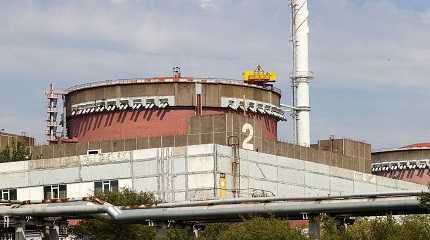
MELITOPOL, December 14. /TASS/: Moscow deems the demilitarization of the Zaporozhye nuclear power plant (ZNPP) to be inadmissible because this would allow Ukraine’s militants to take over the nuclear facility, so the establishment of a security zone is warranted, Vladimir Rogov, chairman of the We Are Together with Russia movement, said commenting on remarks by Director General of the International Atomic Energy Agency (IAEA) Rafael Grossi.
On December 10, in an interview with Al Jazeera, Grossi said that, in his opinion, the nuclear station faces "enormous dangers". He said that he was negotiating for the establishment of a protective safety and security zone around the plant and was in talks "with Ukraine and with Russia which is effectively in control of the plant." The IAEA boss explained that this was a comprehensive concept unrelated to the talks on a ceasefire or on a demilitarized zone.
"Now, this is a more realistic statement already. The demilitarization of the ZNPP (translated to normal language - removing the nuclear station’s security personnel) is an unacceptable scenario for Russia since this would result in [Kiev’s] terrorists being able to take it over," the politician wrote on his Telegram channel on Wednesday.
On Tuesday, the IAEA chief met with Ukrainian Prime Minister Denis Shmygal in Paris where they discussed the situation at the Zaporozhye facility and organizing the agency’s permanent missions to the Khmelnitsky, Rovno and South Ukrainian nuclear facilities as well as to the zone of the Chernobyl nuclear power plant. Following the talks, the IAEA published a statement asserting that the sides "made progress in ongoing discussions about setting up a nuclear safety and security protection zone" around the Zaporozhye plant.
Located in Energodar, the Zaporozhye nuclear facility, having roughly 6GW of capacity, is the largest of its kind in Europe. Russia took control of the plant on February 28 in the first days of its special military operation in Ukraine. The power station has continued its regular operation. Since then, the units of the Ukrainian army have been periodically shelling both Energodar’s residential districts and the premises of the nuclear station, using drones, heavy artillery and multiple-launch rocket systems.




